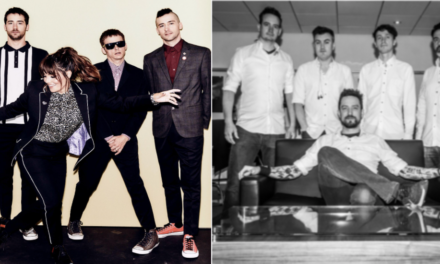No, I’m not terribly certain why we’re revisiting the Tomb Raider franchise in 2018. I’m speaking in terms of contributing to any kind of cultural moment. I’d fault nostalgia, but there’s currently a market for these big-budget action/adventure projects as superhero movies are released in every month of the year, or it seems like. Don’t take that as a knock on the genre, though. These oft-bloated tentpoles can sometimes be exciting and even in certain situations, be important (see: Black Panther). Tomb Raider is not one of those select few. It’s another among the county herd with its bland action and gaudy callbacks to the video game franchise. Were it not for the talented performers here, this’d be indiscernible from the rest of the dreck released into theaters and made by boardrooms. Not asking for the auteur theory or some striking attempt at formalism in these things, just make them with a bit of verve.
Lara Croft (Alicia Vikander) likes to live the quiet and humble life as a bike messenger in London. Her father’s death weighs heavily on her and after a few revelations about his travails as a swashbuckling treasure hunter, she takes it upon herself to continue his research. That leads her to a deserted island off the coast of Japan. The island is hiding dark secrets and she must race against time to prevent an evil profiteering corporation called Trinity from seizing the power that may lie in a tomb on the island.
I honestly don’t know who to fault more with how Tomb Raider looks: Director Roar Uthaug (The Wave) or the committee that storyboarded this thing within an inch of its life. The action sequences are frequent and lifeless. As Lara runs to or from dangerous things, the audience is put just out of reach of the proceedings. There’s no visceral kick or adrenaline rush-inducing scenes when they’re sanitized by the modern standard of huge CG effects. Croft is portrayed as a strong heroine in the games, someone who is way more than capable of handling things herself. In here, her actions are dictated by whomever is shooting at her, not the sense of adventure that drives the games.
Therein lies a problem with adaptations. If we are to adopt a property and change things so it better suits a cinematic narrative, how about settling on something with a little more panache? Put Scarlett Johansson’s Black Widow into this plot and nothing would change. Tomb Raider stands as a testament to what happens when the fiduciary reasons to make something outweigh the potential cultural and artistic benefits. The best of these big-budget actioners change the game or find fun in not standing for anything. This, on the other hand, can’t tear itself from its one influence which just so happens to be an amalgam of other film influences. Who is Lara Croft? A character or a vessel for whatever is popular to be funneled into?
Alas, all is not lost in Tomb Raider. Alicia Vikander adds a layer of interiority to Lara’s story that very clearly wasn’t meant to be expounded upon in the script. Her struggle with legacy and coming into her own is given new life by Vikander’s rigid performance. Like her character, Vikander softly refuses to be labeled as vulnerable or tough. A character can be both concurrently, in the right hands. The same goes for Walton Goggins’ evil baddie, Mathias Vogel, although to a lesser degree. Goggins is one of the most interesting actors working today and while he isn’t given a meaty role to chew into, he frequently has the kind of mustache-twirling fun that these caricatures should have.
I’ve seen the argument that while this may not be the best of these movies, Tomb Raider is serviceable at being mediocre. Again, I ask this question to you: If we adhere to that standard, then what’s the fucking point? If the 2001 Jolie-starrer was indicative of the fetishes that existed in the early 2000s, then this new version is indicative of the fetishes that exist in the 2010s: That throwing a noticeable name like Tomb Raider over your new movie can potentially net you some of that big cash. These movies make themselves at this point.













